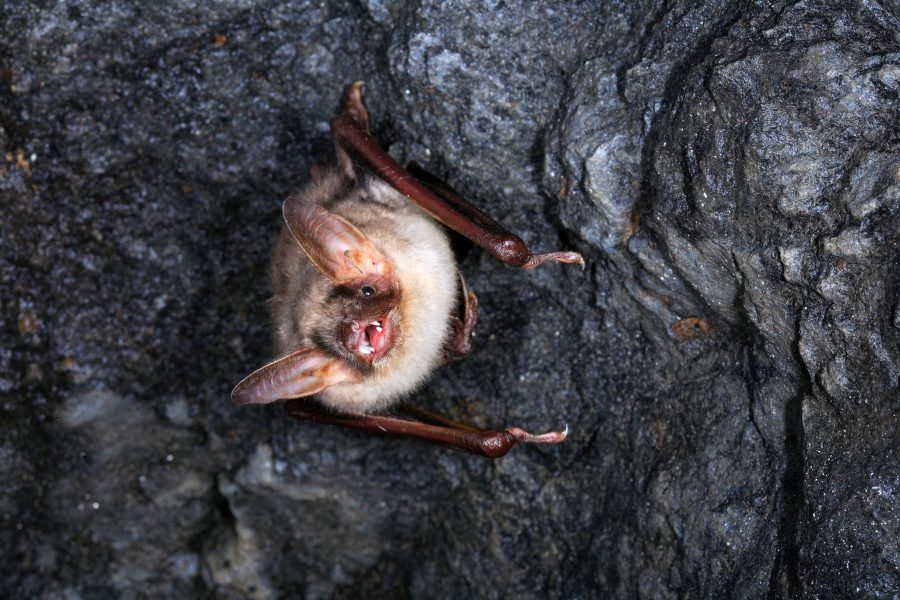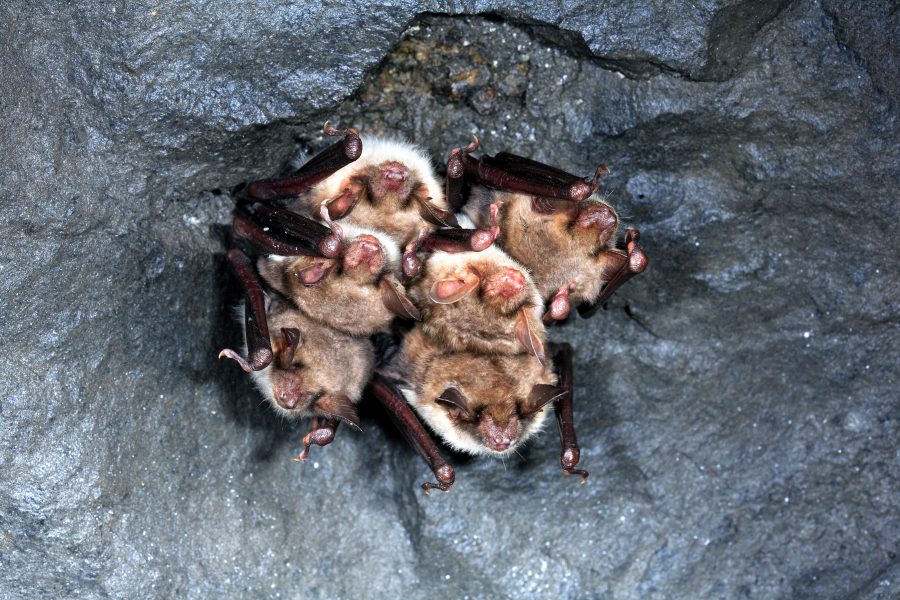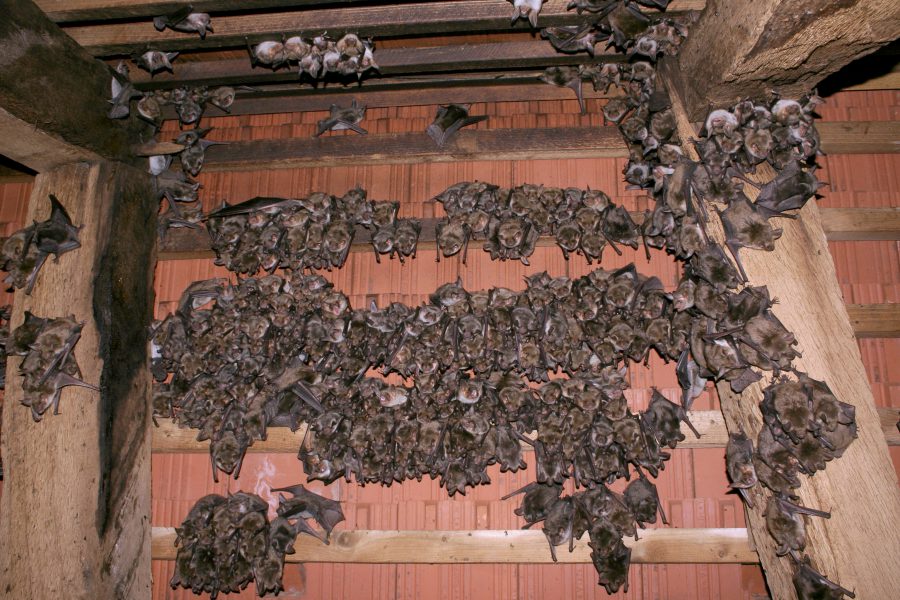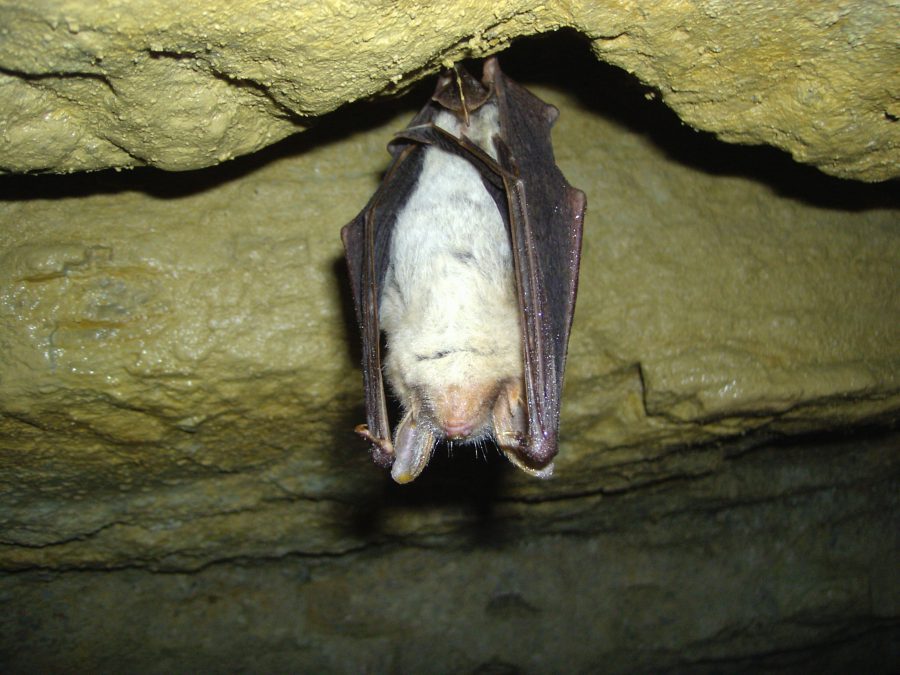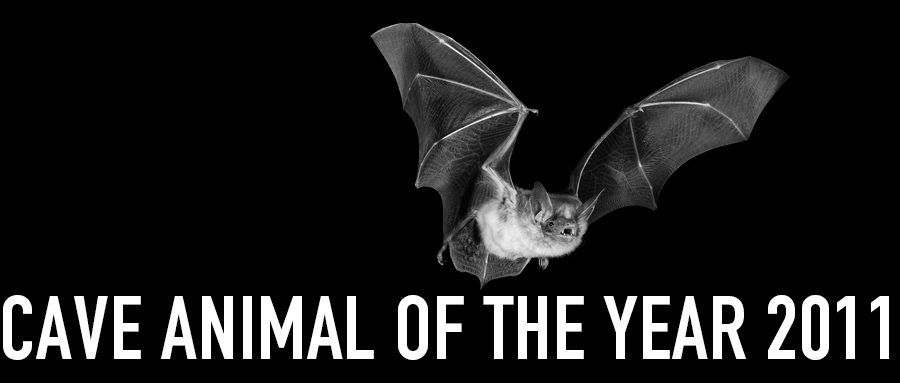
Greater Mouse-eared Bat - Cave Animal of the Year 2011
Introduction
The Greater Mouse-eared Bat was chosen as Cave Animal of the Year to point out the immense deficiencies in the research of subterranean ecosystems and their associated faunas.
In addition, this choice is our contribution to the "European Year of the Bat" , which was declared for 2011 by the organisation "EUROBATS". All native bats in Germany are threatened with extinction and are protected by the German environmental laws. According to the Bundesnaturschutzgesetz [Federal Law of Environmental Protection], it is forbidden to enter subterranean overwintering quarters in the time from October, 1st to March, 31st.
Description
With a wing span of 42 cm, the Greater Mouse-eared Bat is our largest species of bats. Typically, the bat occurs in altitudes below 800 m, in warmer areas also higher.
It requires areas with a high percentage of forests, deciduous or mixed forests with little ground vegetation are preferred. The maternity roosts, large colonies where the females rear their youngs together, are found in Central Europa predominantly in large attics. All indigenous bats in Central Europa feed exclusively on insects.
From mid-August on, Mouse-eared Bat are swarming at caves. The Mouse-eared Bat migrate regionally between summer, swarming and winter quarters, usually distances between 50 and 100 kilometres. Bats belong to the mammals which are hibernating. This way, they survive the time of the year which lacks in insects. Most important are quarters with a constant low temperature combined with a high humidity. Preferred are undisturbed quarters like natural caves, rock cellars, mine tunnels or old bunker systems.
Distribution
The Greater Mouse-eared Bat ranges from the European coast of the Mediterranean Sea through all of Central Europa to the southern Netherlands, Schleswig Holstein and the North of Poland. North of this line only single animals were found. The eastern border runs from Western Ukraine to the Black Sea and from Asia Minor to the Caucasus and the Near East. In all of its range, the species depends on natural caves and other subterranean cavities. In colder climatic zones, the animals are overwintering in caves, in the Mediterranean, caves are utilised during reproduction.
